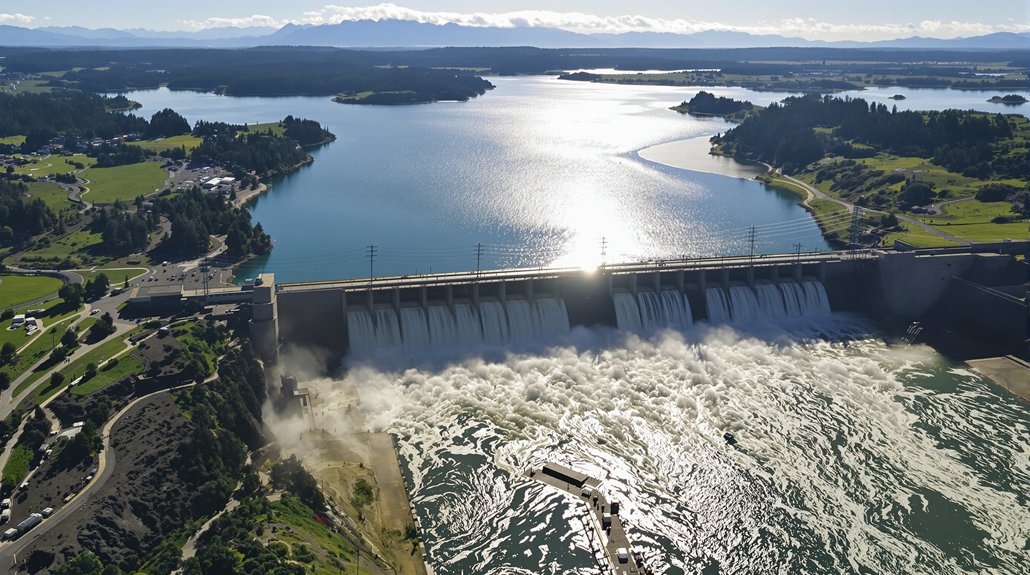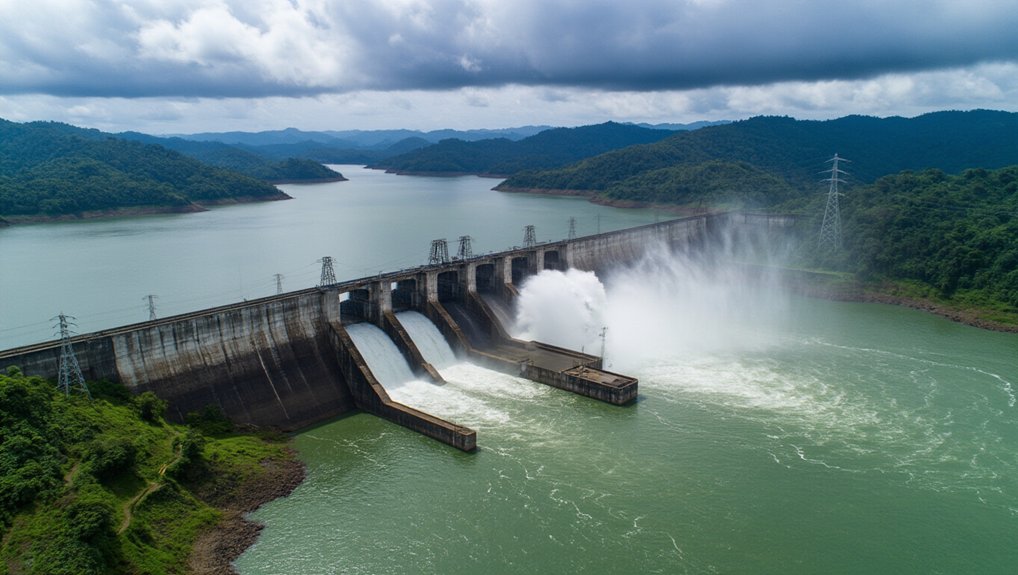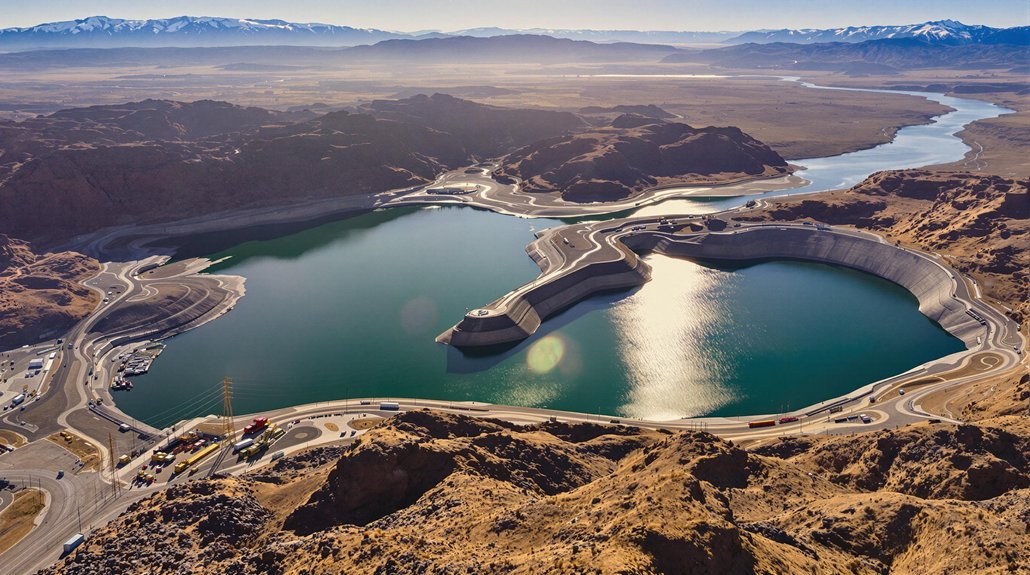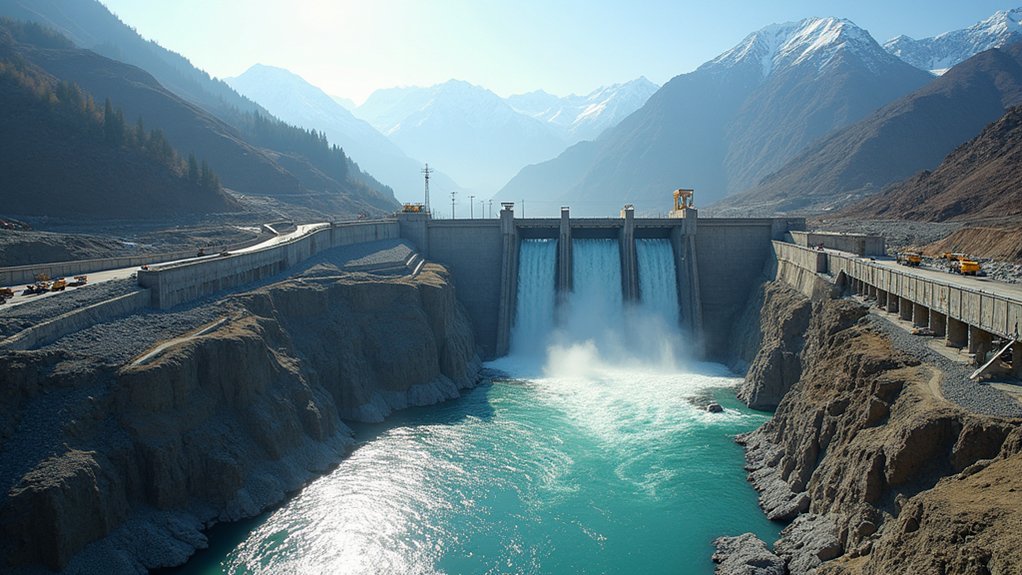A deluge of rain. That’s what the Southeast needed, and boy did it get it. Record rainfall in southeastern Oregon has dramatically shifted the region’s energy outlook, transforming what was once a bleak hydropower forecast into something resembling a renaissance. After losing a staggering $1.5 billion in revenue over 18 years due to drought conditions, the hydropower sector is finally catching a break.
After decades of drought losses, the Southeast’s hydropower sector finally catches a much-needed break with record-breaking rainfall.
The timing couldn’t be better. The Southeast is staring down a massive 30% surge in electricity demand over the next five years—that’s a whopping 128 GW of new capacity needed. Data centers are popping up like mushrooms after rain, especially in Georgia and Florida. Someone’s gotta power all those servers, right?
Currently, the Southeast’s energy mix looks like this: natural gas dominates at 50%, coal hangs on at 16%, nuclear provides 11%, and hydropower contributes about 7%. Not exactly a green dream. But things are changing.
The region already boasts 9.7 GW of pumped storage hydropower capacity—the largest in the nation. This isn’t just bragging rights; it’s essential infrastructure for grid reliability. PSH facilities generated an impressive 12.2 TWh annually from 2005 to 2023. Not too shabby.
What’s driving this hydro comeback? Snowpack, for one. Higher elevation accumulation creates natural reservoirs that feed hydroelectric generation through spring and summer. This resurgence has led to Northwest hydropower generation expected to rise about 17% in 2025 compared to the previous year.
Infrastructure modernization is another key factor. Old dams are getting facelifts. Non-powered dams are being retrofitted for electricity generation. Energy analysts project that expanding the region’s energy efficiency initiatives could significantly reduce the massive investment needed to meet future capacity demands. It’s basically recycling, but for massive concrete structures.
The economic impact extends beyond just keeping the lights on. Jobs are being created. Carbon emissions are dropping as hydro displaces fossil fuels. With up to 90% efficiency, hydropower plants convert more of their energy input into electricity than most other generation methods.
And the grid is becoming more stable—a critical benefit as renewable integration accelerates.
Is it enough to meet the looming demand surge? Probably not alone. But in the energy world, every gigawatt counts. And hydropower’s contribution is rising with the water levels.
References
- https://lookouteugene-springfield.com/story/government-politics/2025/05/27/after-reaching-historic-lows-hydropower-generation-in-the-northwest-expected-to-rise-in-2025/
- https://www.eia.gov/todayinenergy/detail.php?id=65286
- https://www.seealliance.org/february-map-of-the-month/
- https://www.energy.gov/sites/prod/files/2021/01/f82/us-hydropower-market-report-full-2021.pdf
- https://storymaps.arcgis.com/stories/23394b34ad514fa5869391a168141549








